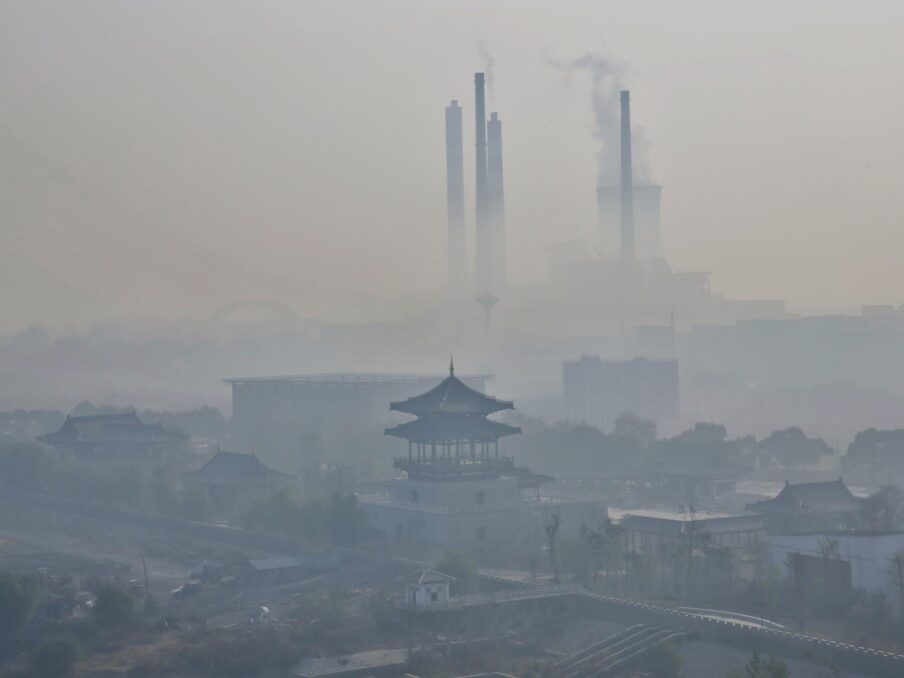China is once again in the news and this time it’s not because of the border disputes with its neighbouring countries like India or Taiwan. It is because of its fossil fuel policies.

Despite China’s commitments to environmental sustainability and reducing carbon emissions, recent developments have raised serious concerns about its dedication to these goals. China, the world’s largest carbon emitter, is currently approving the construction of new coal power projects at an alarming rate of two plants per week, which experts argue is detrimental to achieving its energy and climate targets.
In 2021, Chinese President Xi Jinping made a promise to halt the construction of coal-powered plants as part of the country’s efforts to combat climate change. The government had also pledged to peak its emissions by 2030 and achieve carbon neutrality by 2060. However, these commitments seem to be contradicted by recent actions.
China is the world’s largest emitter of carbon dioxide primarily driven by the use of fossil fuels.
Following the energy shortages faced in 2022, China reversed its stance on coal projects, approving a staggering 86 gigawatts (GW) of new coal-fired power capacity – a record-breaking figure. To put this in perspective, a single gigawatt is equivalent to the power generated by a large coal plant.
The trend of coal project approvals has continued into 2024. The Global Energy Monitor (GEM) and the Centre for Research on Energy and Clean Air report that authorities granted approvals for 52GW of new coal power in the first half of the year itself. In addition to this, construction began on 37GW of new coal power, and plans were announced for 41GW-worth of new projects. Moreover, 8GW of previously suspended projects were given the go-ahead. Alarmingly, around half of the plants approved in 2022 had already started construction by the summer.
Analysts are growing increasingly concerned about this rapid pace of coal project approvals. They emphasize that unless China takes immediate action to curb these approvals, it will be difficult for the country to meet its coal-fired power reduction goals during its 15th five-year plan (2026–2030). Either existing projects will need to be canceled, or operational coal plants will have to be retired prematurely, both being unlikely.
One striking observation is that a significant portion of the new coal power projects is being developed in regions that already have an excess of coal-fired power capacity. This raises questions about the coherence of positioning coal power as a “supporting” source for clean energy. Approximately 60% of new coal power projects are in grid regions with surplus capacity, undermining the notion that coal is simply serving as a complementary source.
While China has been making notable strides in renewable energy, such as wind, solar, and hydroelectricity, its infrastructure for storing and distributing renewable energy has not kept pace. In areas where interconnectivity between grids is lacking, fossil fuel-driven energy remains essential for grid stability and the integration of variable renewable sources.
It has to be mentioned to China’s credit that it is the largest generator of clean energy but it is negated by such backward steps.
Cory Combs, an analyst at Trivium China, suggests that the short-term energy security and economic recovery are currently outweighing China’s long-term sustainability considerations. This prioritization could potentially jeopardize its long-term commitments to reducing coal consumption and achieving carbon neutrality by 2060.
As China continues to approve coal projects at an unsustainable rate, the country faces a critical juncture. While it has made progress in curbing pollution(still way beyond the permissible limits) and promoting renewable energy, the current trajectory risks undermining its climate goals. As the world watches China’s efforts to balance economic growth and environmental responsibility, the decisions made in the coming years will significantly impact the global fight against climate change.












